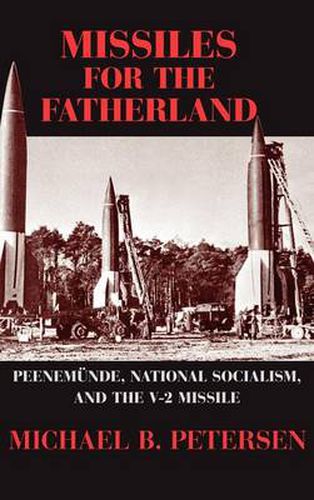Readings Newsletter
Become a Readings Member to make your shopping experience even easier.
Sign in or sign up for free!
You’re not far away from qualifying for FREE standard shipping within Australia
You’ve qualified for FREE standard shipping within Australia
The cart is loading…






Missiles for the Fatherland tells the story of the scientists and engineers who built the V-2 missile in Hitler’s Germany. This text was the first scholarly history of the culture and society that underpinned missile development at Germany’s secret missile base at Peenemunde. Using mainly primary source documents and publicly available oral history interviews, Michael Petersen examines the lives of the men and women who worked at Peenemunde and later at the underground slave labor complex called Mittelbau-Dora, where concentration camp prisoners mass-produced the V-2. His research reveals a complex interaction of professional ambition, internal cultural dynamics, military pressure, and political coercion, which coalesced in daily life at the facility. The interaction of these forces made the rapid development of the V-2 possible but also contributed to an environment in which stunning brutality could be committed against the concentration camp prisoners who manufactured the missile.
$9.00 standard shipping within Australia
FREE standard shipping within Australia for orders over $100.00
Express & International shipping calculated at checkout
Missiles for the Fatherland tells the story of the scientists and engineers who built the V-2 missile in Hitler’s Germany. This text was the first scholarly history of the culture and society that underpinned missile development at Germany’s secret missile base at Peenemunde. Using mainly primary source documents and publicly available oral history interviews, Michael Petersen examines the lives of the men and women who worked at Peenemunde and later at the underground slave labor complex called Mittelbau-Dora, where concentration camp prisoners mass-produced the V-2. His research reveals a complex interaction of professional ambition, internal cultural dynamics, military pressure, and political coercion, which coalesced in daily life at the facility. The interaction of these forces made the rapid development of the V-2 possible but also contributed to an environment in which stunning brutality could be committed against the concentration camp prisoners who manufactured the missile.